The age and gender profile of the veteran cohort in the survey closely reflects the overall Australian veteran population, where 86% of veterans are men and 45% are aged 65 and over (AIHW analysis of ABS 2022).
Because of the different age and gender profiles of the veteran and non-veteran populations, comparisons between the two may be misleading. To resolve this issue, the findings in this article have been reported separately by gender, and for different age groups, where possible. In sections where this was not possible, data are presented for veterans only (either to maintain veterans’ confidentiality, or the statistical robustness of the results).
Due to data limitations, this article does not report age standardised rates.
Daily tobacco smoking
Almost 1 in 10 veterans (men and women) surveyed (9.6%) smoked tobacco daily.
Among men surveyed, 8.2% of veteran men, and 9.6% of non-veteran men smoked tobacco daily. Although proportions of daily smoking in younger veteran men aged 18 to 44 were lower (5.3%) than in non-veteran men of the same age (9.6%), this difference should be interpreted with caution for data quality reasons (Figure 2).
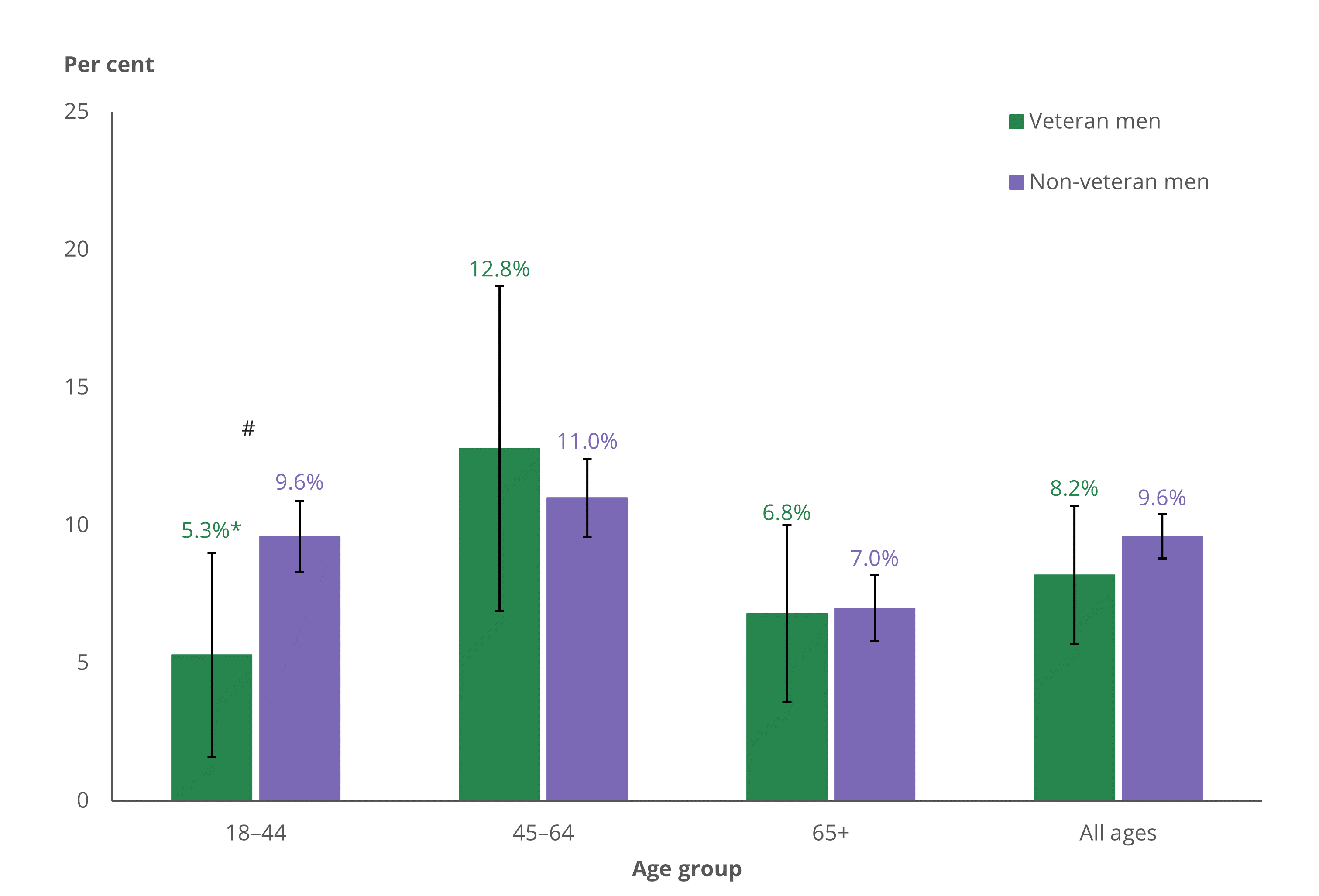
* Relative standard error (RSE) greater than 25% and should be interpreted with caution.
# Statistically significant difference at p≤0.05 between veteran men and non-veteran men.
Source: NDSHS 2022–2023; Table 10.27.
Use of e-cigarettes
Just over 1 in 10 (11%) veteran men had used electronic cigarettes/ vapes (e-cigarettes) in their lifetime. Use was highest in men aged 18 to 44, and lowest in men aged 65 and over, regardless of veteran status.
When compared separately by age, lifetime use of e-cigarettes did not differ between veteran men and non-veteran men (Figure 3). This finding suggests the difference between veterans and non-veterans when all age groups are combined may be due to veterans being an older population than non-veterans.
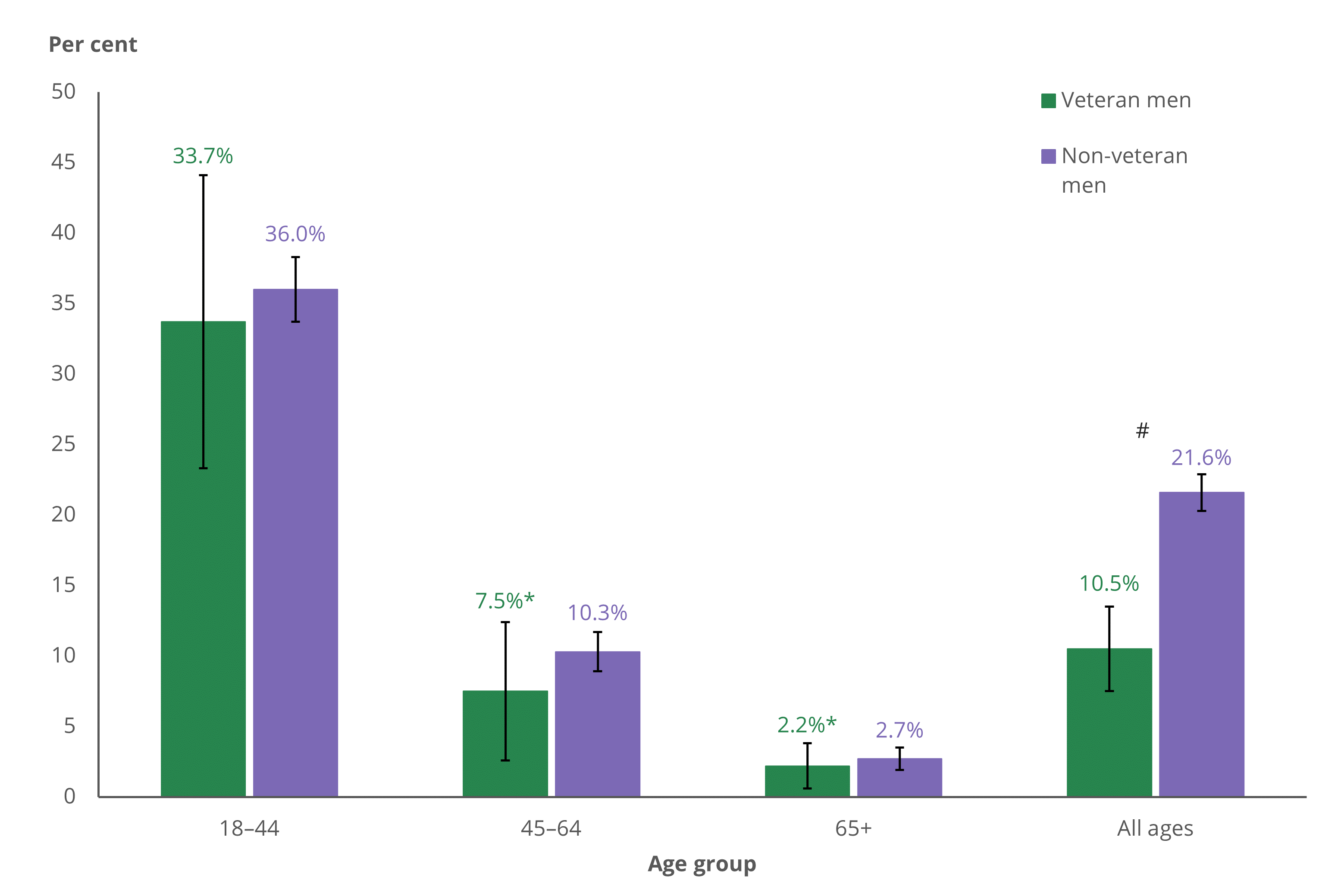
* Relative standard error (RSE) greater than 25% and should be interpreted with caution.
#Statistically significant difference at p≤0.05 between veteran men and non-veteran men.
Source: NDSHS 2022–2023; Table 10.28.
Risky drinking
How do we define risky drinking?
Drinking at risky levels or ‘risky alcohol consumption’ is defined as either or both of the following:
- consuming more than 10 standard drinks per week on average
- having more than 4 standard drinks in a single day at least once a month over the previous 12 months.
These definitions are based on the 2020 National Health and Medical Research Council Alcohol guideline 1 (NHMRC, 2020).
While not part of the NHMRC guidelines, consumption of 11 or more drinks in a single occasion at least once yearly has also been included in this section, though it is not included in overall proportions of ‘risky drinking’.
One in 3 veterans (men and women) (33%) engaged in risky drinking in the last 12 months.
Proportions of veteran men engaging in risky drinking were similar to non-veteran men across all age groups analysed and for all age groups combined (Figure 4).
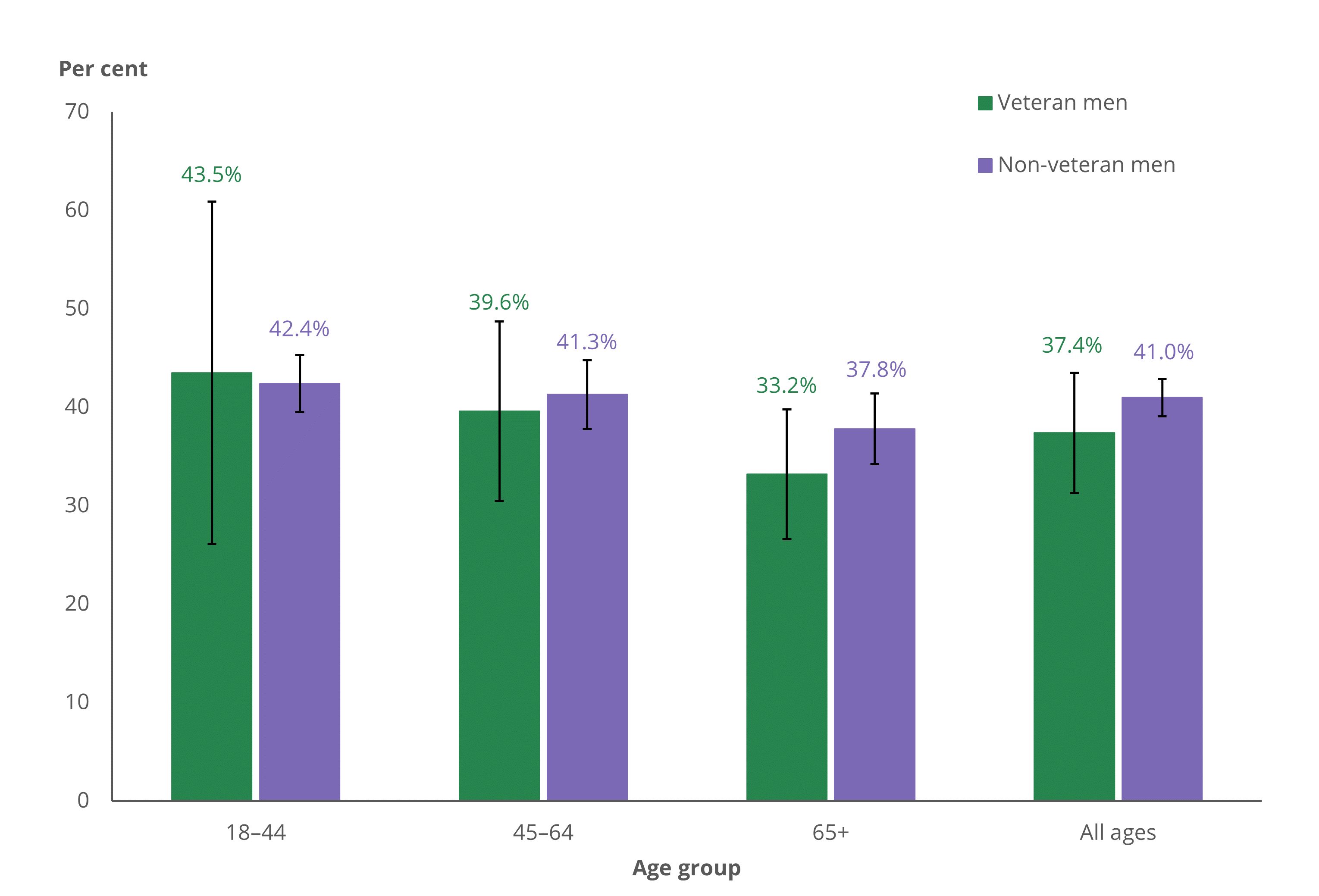
Note: This figure shows no statistically significant difference between veteran men and non-veteran men.
Source: NDSHS 2022–2023; Table 10.29.
Among veteran men, just over a third (34%) drank over 10 standard drinks per week, just over a quarter (26%) drank more than four standard drinks in a single day at least monthly, and 16% drank 11 or more standard drinks in a single day at least yearly (Figure 5).

* Relative standard error (RSE) greater than 25% and should be interpreted with caution.
Source: NDSHS 2022–2023; Tables 10.30 to 10.32.
Risky behaviours while under the influence of alcohol
What risky behaviours does this article cover?
In this article, risky behaviours while under the influence of alcohol are defined as: going to work, swimming, operating a boat, driving a motor vehicle, operating hazardous machinery, creating a public disturbance or nuisance, causing damage to property, stealing money, goods or property, and verbally or physically abusing someone.
Specific behaviours are unable to be reported on in this article due to limitations with data quality.
About 1 in 6 (16%) veteran men surveyed engaged in at least one risky behaviour while under the influence of alcohol in the 12 months preceding the NDSHS.
Among the age groups analysed, both veteran and non-veteran men aged 18 to 44 were most likely to engage in risky behaviours, while those aged 65 and over were least likely (Figure 6).

Note: This figure shows no statistically significant difference between veteran men and non-veteran men.
Source: NDSHS 2022–2023; Table 10.33.
Attitudes on how to reduce problematic alcohol consumption
The NDSHS asked: if respondents were given $100 to spend on reducing problematic alcohol consumption, how much they would allocate to education, treatment, and law enforcement.
On average, veterans surveyed (men and women) allocated the most money to education, followed by law enforcement and then treatment. Veterans in the older age groups allocated a greater proportion of funds to education and a lower proportion to treatment than veterans in the younger 18 to 44 age group (Figure 7).
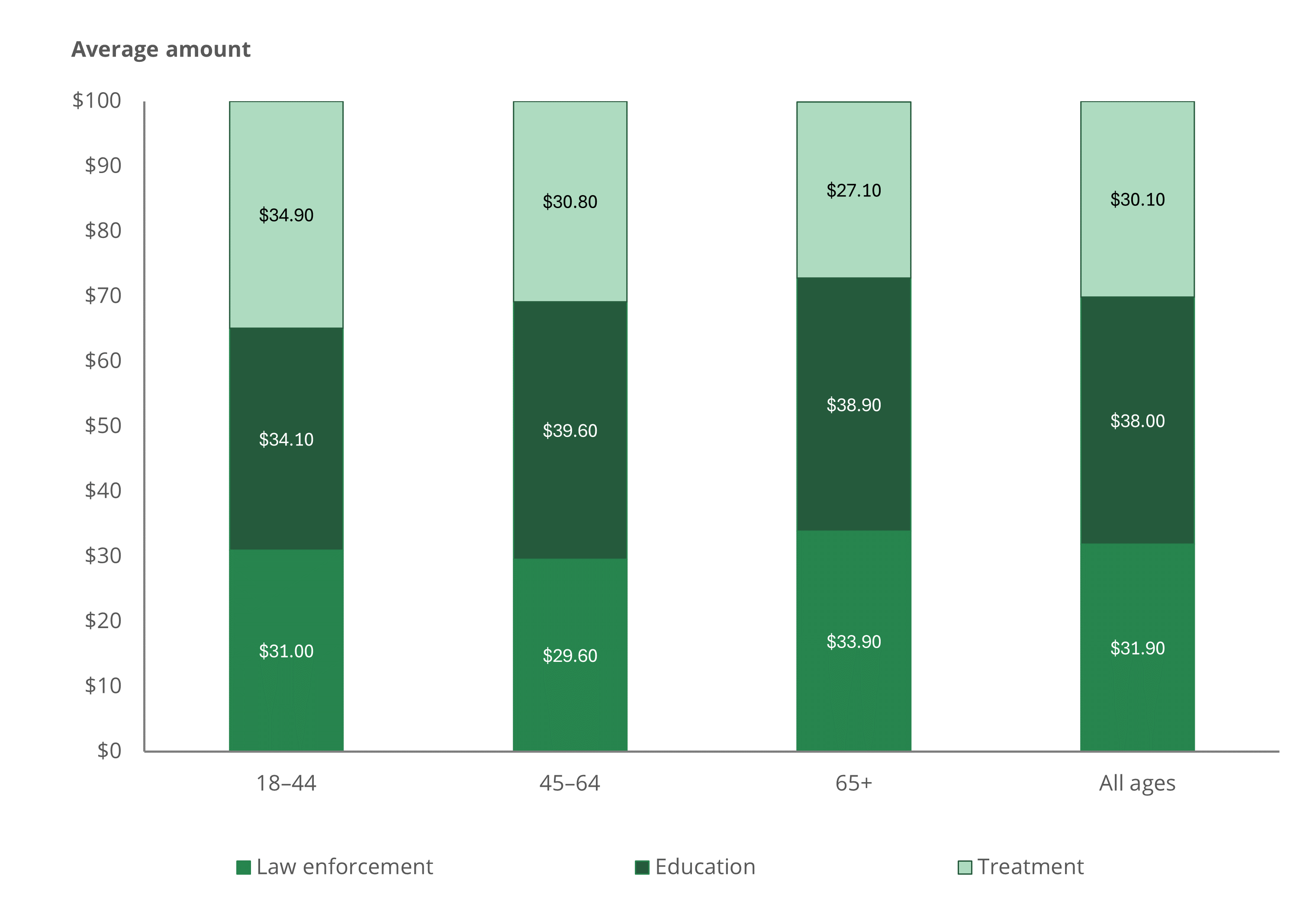
Source: NDSHS 2022–2023; Table 10.34.
Illicit drug use
Illicit drugs in the National Drug Strategy Household Survey
In this article, illicit drugs include any drug which is illegal to possess or use, as well as any legal drug used in an illegal manner, for example either:
- a pharmaceutical drug used for non‑medical purposes
- glue or petrol that is sold legally, but is used in a manner that is not intended, such as inhaling fumes.
Non‑medical use refers to using the drug for recreational purposes (to induce or enhance a drug experience) and using a drug in a way that it was not prescribed/ recommended (for example, using it to enhance a drug experience, for weight loss or performance enhancement).
Less than half (46%) of all veterans (men and women) surveyed had used an illicit drug in their lifetime. For veteran men, this proportion was 45%.
Regardless of veteran status, men aged 45 to 64 were most likely to have ever used an illicit drug in their lifetime, and men aged 65 and over were least likely (Figure 8).
When compared separately by selected age groups, veteran men were equally likely to have ever tried an illicit drug as non-veteran men (Figure 8).
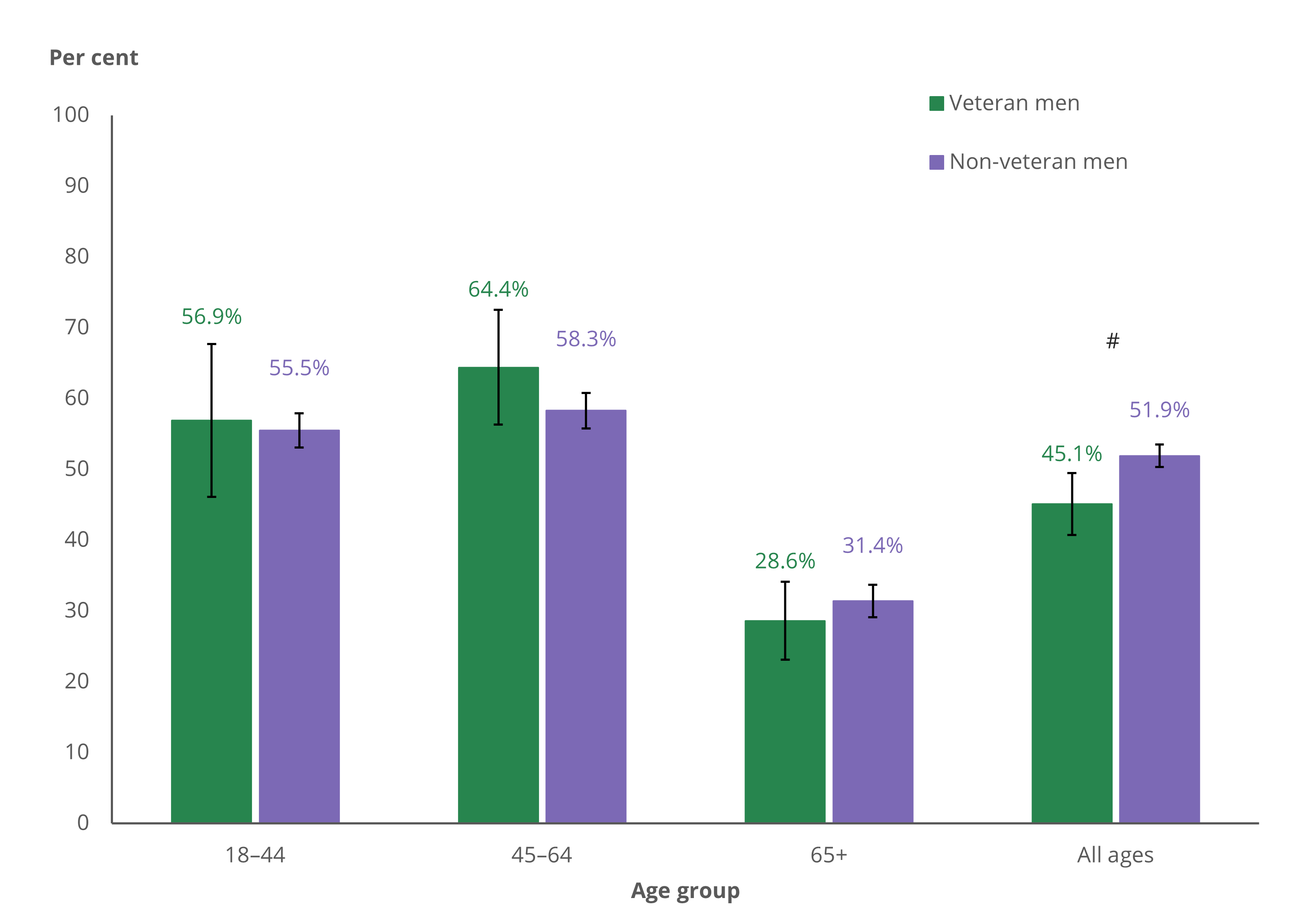
# Statistically significant difference at p≤0.05 between veteran men and non-veteran men.
Source: NDSHS 2022–2023; Table 10.35.
Cannabis was the most common type of illicit drug men had ever used, regardless of veteran status. However, veteran men aged 65 and over were less likely to have ever used cannabis than non-veteran men of the same age (21% compared with 27%; Figure 9).
Use of different types of illicit drugs were otherwise similar between veteran and non-veteran men when compared separately by selected age groups.
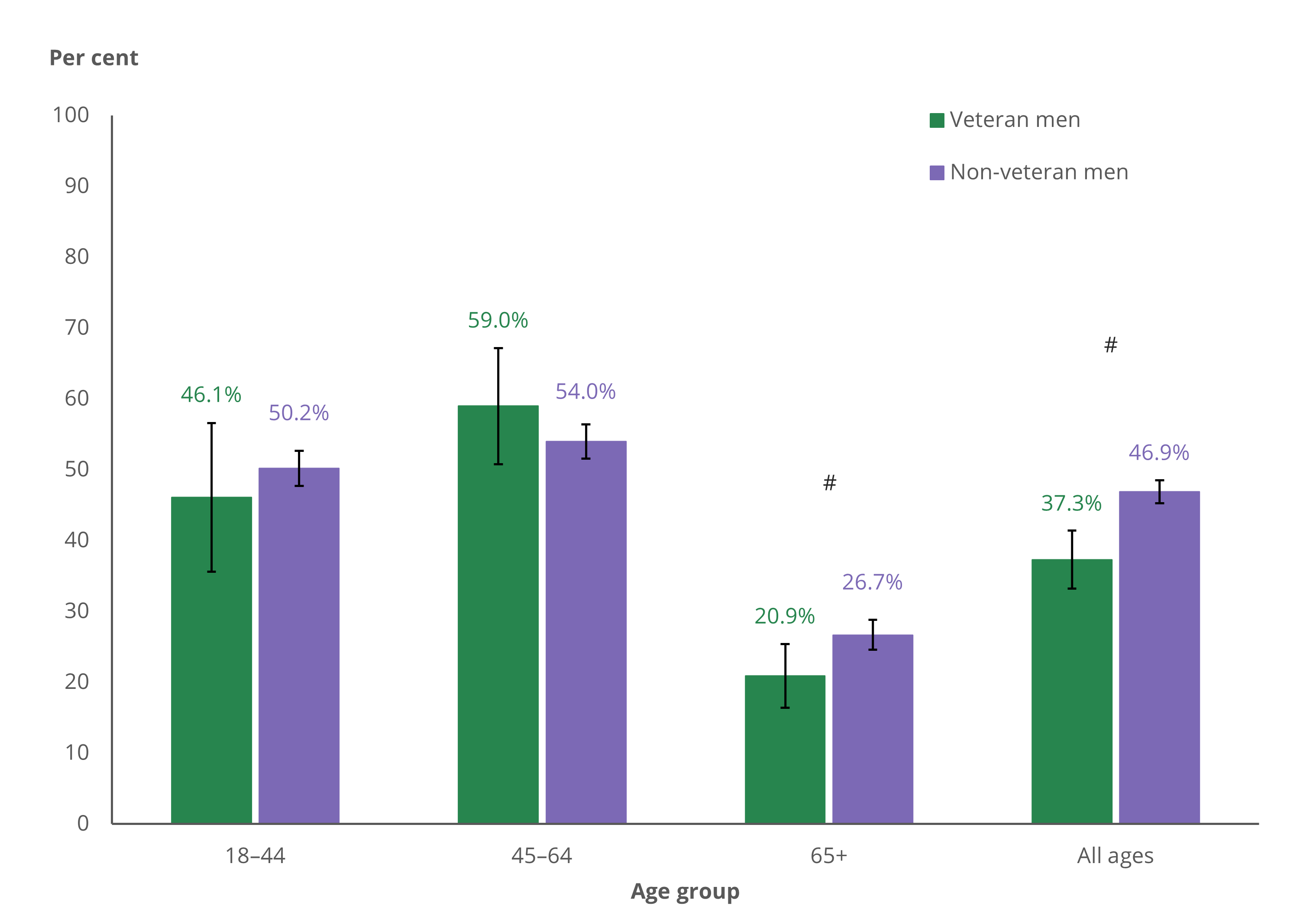
# Statistically significant difference at p≤0.05 between veteran men and non-veteran men.
Source: NDSHS 2022–2023; Table 10.35.
Veterans-only data
The data presented in the rest of this article is for all veterans (males and females) and is not disaggregated by age groups. This is due to low cell counts. Comparison of findings between the whole veteran cohort and the whole non-veteran cohort in the data tables should be interpreted with caution.
Reasons for first using an illicit drug
Among all veterans (both men and women) who had ever used an illicit drug in their lifetime, the most common reasons for first using an illicit drug were To see what it was like/curiosity and because Friends or family were using it or had offered it to them (Figure 10).
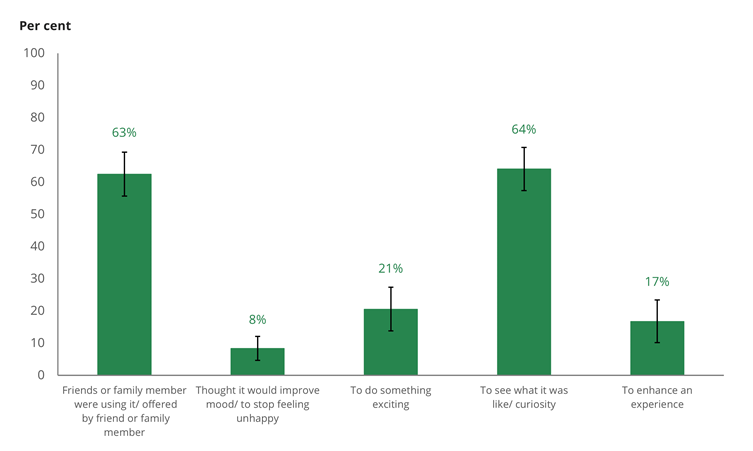
Source: NDSHS 2022–2023; Table 10.36.
Reasons for never trying an illicit drug
Among all veterans (both men and women) who had never tried an illicit drug in their lifetime, the most common reason was Just not interested, followed by Reasons related to health or addiction (Figure 11).
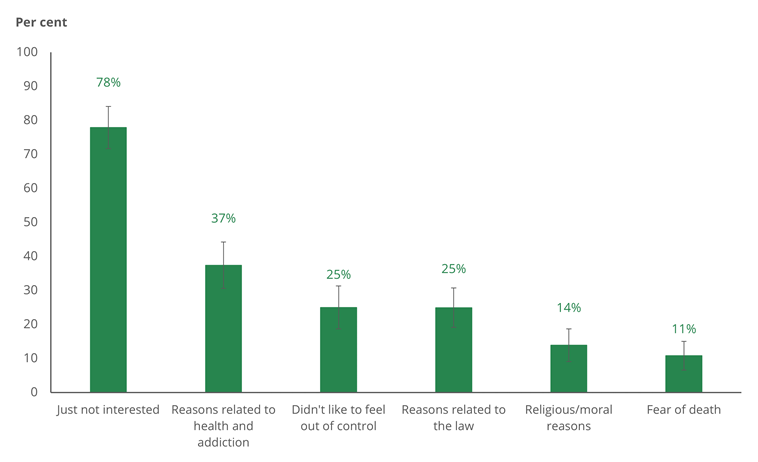
Source: NDSHS 2022–2023; Table 10.37.
Attitudes on how to reduce illicit drug use
The NDSHS asked: if respondents were given $100 to spend on reducing illicit drug use, how much they would allocate to education, treatment, and law enforcement.
On average, veterans (men and women) surveyed allocated the most money to law enforcement, followed by education and then treatment. Veterans in the 65-and-over age group allocated almost twice as much to law enforcement than to treatment. (Figure 12).
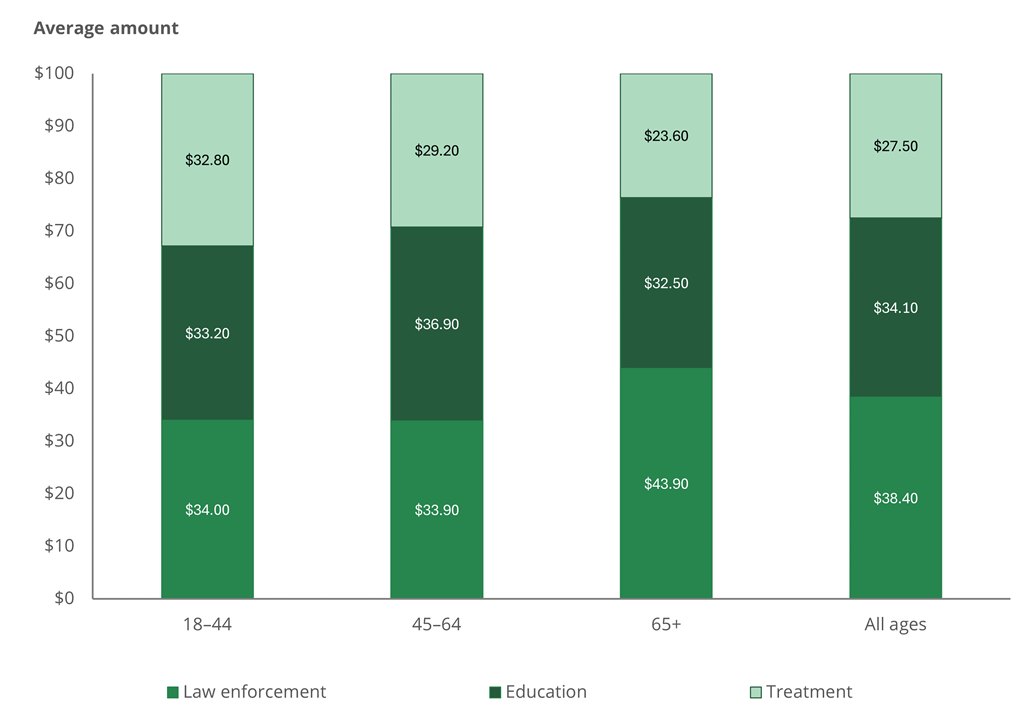
Source: NDSHS 2022–2023; Table 10.34.
Cannabis for medical purposes
Of veterans who had used cannabis recently (that is, in the 12 months preceding the survey), over half (55%) had used it for medical purposes at least sometimes (Figure 13).
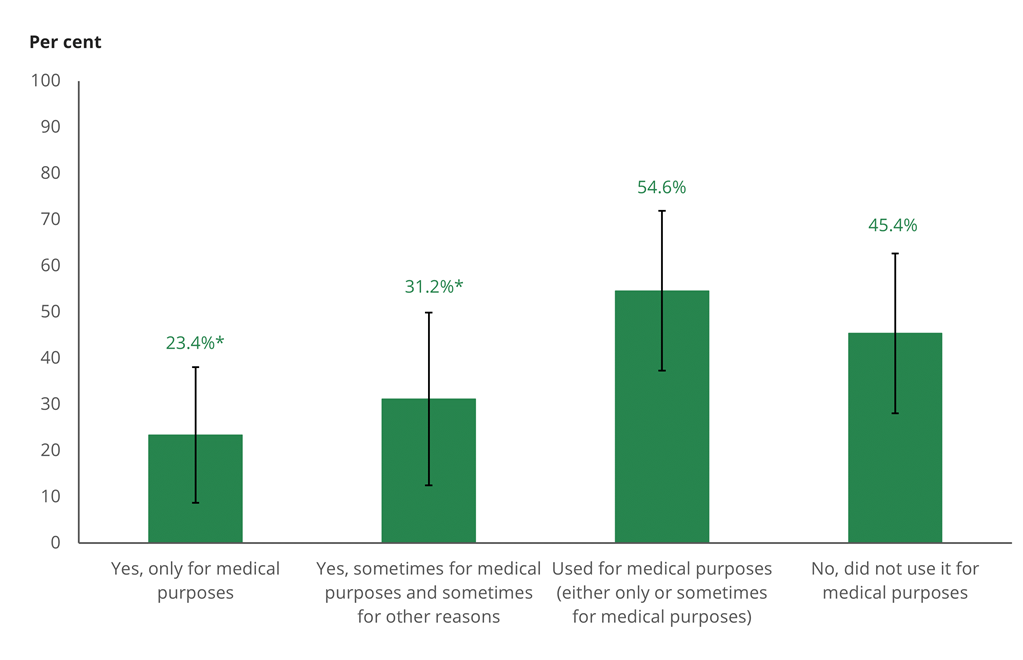
* Relative standard error (RSE) greater than 25% and should be interpreted with caution.
Source: NDSHS 2022–2023; Table 10.38.
References
ABS (Australian Bureau of Statistics) (2022) Service with the Australian Defence Force: Census. ABS, Australian Government, accessed 30 April 2024.
AIHW (2024) National Drug Strategy Household Survey 2022–2023. AIHW, Australian Government, accessed 8 May 2024.
NHMRC (National Health and Medical Research Council) (2020) Australian guidelines to reduce health risks from drinking alcohol. NHMRC, accessed 6 December 2023.















